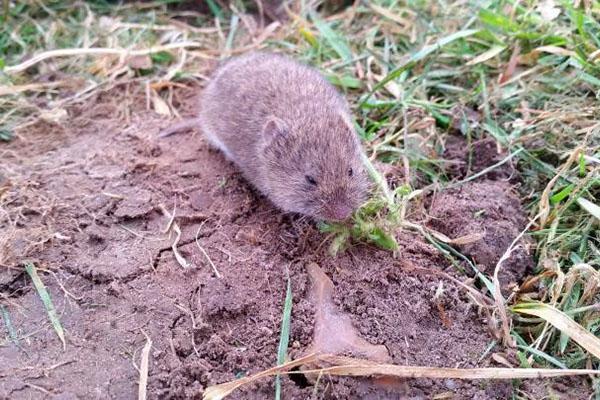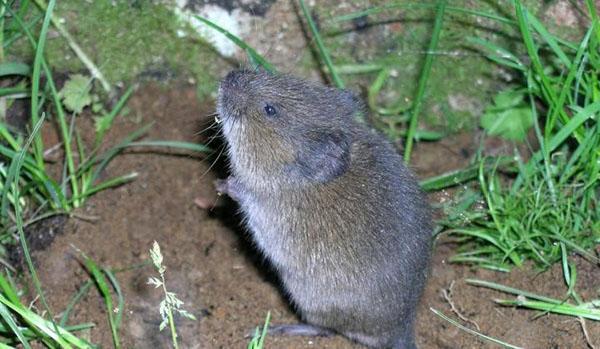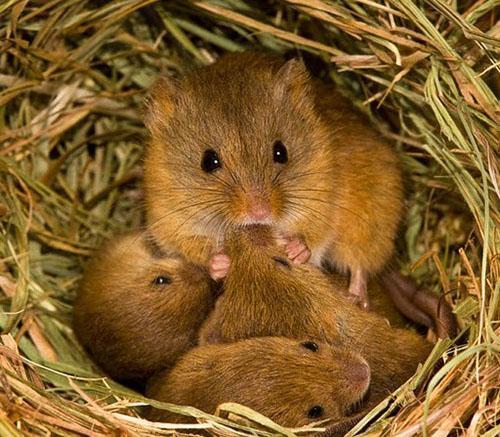How to find a vole on the site and deal with it
 Voles can drive some summer residents to real madness. In this article, we will tell you about how Western farmers are fighting this scourge.
Voles can drive some summer residents to real madness. In this article, we will tell you about how Western farmers are fighting this scourge.
A bit of theory

These seemingly cute rodents can do significant damage to your garden. Don't confuse them with mice, which don't do that much damage. Voles gladly eat a variety of plants, as well as the bark of some trees. If you find that your landings have been attacked, be sure to conduct a check to identify unwanted guests. Read how to deal with moles?
How to identify a vole
 A vole can be distinguished by its rounded ears, which are often hidden by wool, small eyes and a short tail. These are small, squat rodents, similar to field mice. Thick fur is usually light brown or gray in color. Animals love fields rich in weeds and ground cover plants. They are active both during the day and at night, especially during the early hours and twilight.
A vole can be distinguished by its rounded ears, which are often hidden by wool, small eyes and a short tail. These are small, squat rodents, similar to field mice. Thick fur is usually light brown or gray in color. Animals love fields rich in weeds and ground cover plants. They are active both during the day and at night, especially during the early hours and twilight.
You will immediately recognize the vole from the snake-like tunnels that run through every corner of the garden. They are most active in the spring, and then their obsessive digging dies down. Rodents love to burrow into roots and bulbs through burrows, and then methodically gnaw them. If you begin to find half-eaten carrots and potatoes, then a vole has started up in your garden. Pests like to nest at the base of trees and shrubs, which can harm the roots, especially as these rodents love to chew on the bark.
How to get rid of a vole
 Here are some effective ways to deal with small rodents. Some of them will definitely work for you.
Here are some effective ways to deal with small rodents. Some of them will definitely work for you.
Try setting humane traps near burrows and nesting sites in the bush area. Place peanut butter baits in the early evening when voles are especially active, and rearrange the traps as needed to get rid of them. Take the prisoners away from the site and release them into the field.
In this case, patience and perseverance will be the keys to success.
If the problem has reached its climax, you can use rodenticide to eliminate the rodents. Consult your horticultural agency for an effective and approved product.
To discourage voles from chewing on the bulbs, add gravel to the hole when planting. You can also moisten the roots with a fungicide to ward off pests. In addition, there are varieties of rodent-resistant onions.
Planting onions in the fall is a good way to do it.
Preventive measures
 To discourage voles from invading your garden at an early stage, there are several simple ways. Preferring a dense protective vegetation cover of weeds and mulch that provides food and protects from predators, rodents react negatively to active weeding and pruning of bushes. Make your yard inhospitable for voles by creating as much clean space as possible.
To discourage voles from invading your garden at an early stage, there are several simple ways. Preferring a dense protective vegetation cover of weeds and mulch that provides food and protects from predators, rodents react negatively to active weeding and pruning of bushes. Make your yard inhospitable for voles by creating as much clean space as possible.
Fortunately, these harmful animals are not the best climbers.Therefore, in order to protect vegetable plantings from rodents, surround them with a metal net, at least 30 cm high, and dig it into the ground to the same depth.
Of course, the best watchdog will be a street cat, which effectively fights all types of mouse-like pests.
Most of the methods you can use to get rid of mice can be applied to voles as well. Always remember about humane methods of fighting, leaving the animals unharmed, unless there is an urgent need to use chemicals.